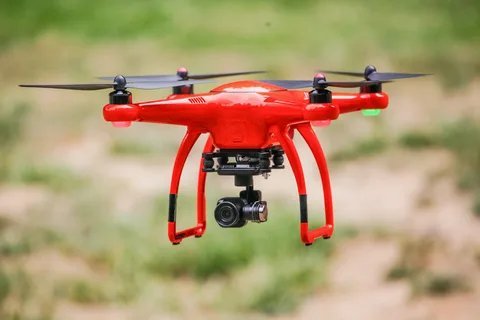The utility sector is pivotal in ensuring the smooth operation of societies, supplying essential services such as electricity, water, and gas. Maintaining these vast networks has traditionally been a reactive process, with repairs and maintenance occurring after failures have caused disruptions. However, with the advent of Condition-Based Maintenance Drone technology, utilities are transitioning from a reactive to a proactive maintenance model. This shift is dramatically improving efficiency, reducing costs, and increasing the reliability of services provided to customers.
Enhancing Inspection and Monitoring Capabilities
Routine Surveillance
Drones equipped with high-resolution cameras and other advanced sensors can perform regular inspections of utility assets that are often difficult or dangerous to reach. For instance, drones can easily navigate the complex and expansive environments of power lines, pipelines, and remote substations. By doing so, they provide frequent and detailed visual feedback that helps identify wear and tear or potential hazards that could lead to failures.
Detailed Data Collection
In addition to visual examinations, drones can be fitted with thermal imaging and multispectral sensors to collect data beyond what the human eye can see. This capability is crucial for the early detection of issues such as overheating components, pipeline leaks, or vegetation encroachment on power lines. The data collected is precise and comprehensive, enabling utility companies to make informed decisions about where and when maintenance is needed most urgently.
Advanced Analytical Tools Integration
Data Integration and Analysis
A Condition-Based Maintenance Drone collects data and integrates it with advanced analytical software to process and interpret the information gathered during flights. This integration allows for using artificial intelligence and machine learning algorithms to explore patterns and predict potential failures before they occur. For example, predictive analytics can forecast equipment malfunctions by comparing real-time data against historical performance benchmarks. This sophisticated level of analysis helps utilities to address issues preemptively, optimizing the timing of maintenance operations and improving overall service reliability.
Real-Time Reporting and Response
Drones can stream data directly to control centers in real-time, enabling immediate responses to detected anomalies. This capability is particularly valuable in crises, such as detecting a gas pipeline rupture or a dam breach. Immediate reporting allows utility operators to swiftly deploy emergency response teams to the affected area, potentially averting catastrophic failures. This real-time communication enhances the responsiveness of maintenance teams and supports dynamic decision-making processes, ensuring that utility services are restored as quickly and safely as possible.
Improving Maintenance Efficiency
Prioritizing Repairs
With the detailed information that drones provide, utility organizations can prioritize maintenance tasks based on the severity of the issues detected. This method is far more efficient than the traditional approach of scheduled maintenance or responding to failures as they occur. Prioritizing repairs helps allocate resources effectively, ensuring that the most critical issues are addressed first, thereby reducing the likelihood of service disruptions.
Reducing Downtime
Using drones for inspections means that many maintenance checks can be performed without shutting down the system. For example, drones can inspect electrical grids while they are still live, avoiding the need for power outages that inconvenience customers and disrupt daily operations. This capability saves time and significantly cuts down the costs associated with downtime.
Enhancing Safety and Reducing Costs
Minimizing Risks
The traditional method of inspecting utility assets often involves significant risks, particularly when dealing with high-voltage equipment or hazardous conditions. Drones eliminate the need for human workers to access these dangerous areas, thereby enhancing safety physically. Less risk to workers also means fewer workplace accidents, leading to lower insurance costs and liability for utility companies.
Cost-Effective Operations
Deploying drones is generally less expensive than organizing manned crews, especially in difficult-to-reach or extensive areas. The reduced labor costs and the decreased need for heavy machinery or helicopters make drones a cost-effective option. Furthermore, by preventing major failures through regular and detailed inspections, utility companies can avoid the substantial costs of emergency repairs and service recovery.
Drones in Action
Preventing Forest Fires
In regions prone to forest fires, drones monitor power lines that run through extensive wooded areas. By identifying hot spots or damaged lines that could ignite a fire, drones help utility companies take swift action to prevent potential disasters. This proactive approach protects the environment and prevents the massive economic losses associated with wildfires.
Managing Storm Impact
Drones are deployed before and after major storms to assess and document the impact on utility infrastructure. This rapid assessment helps quickly identify and rectify damage, thus restoring electricity services faster than ever before. The ability to assess conditions remotely allows repairs to be strategically planned and executed, minimizing the storm’s impact.
The shift from reactive to proactive maintenance facilitated by drones sets new standards in the utility sector. This enhances the reliability and efficiency of utility services and promotes sustainability through the prevention of large-scale failures and efficient resource management. Looking forward, drones will undoubtedly play an increasingly integral role in shaping the future of utility management, driving innovations that ensure safer, more reliable, and cost-effective service delivery.
